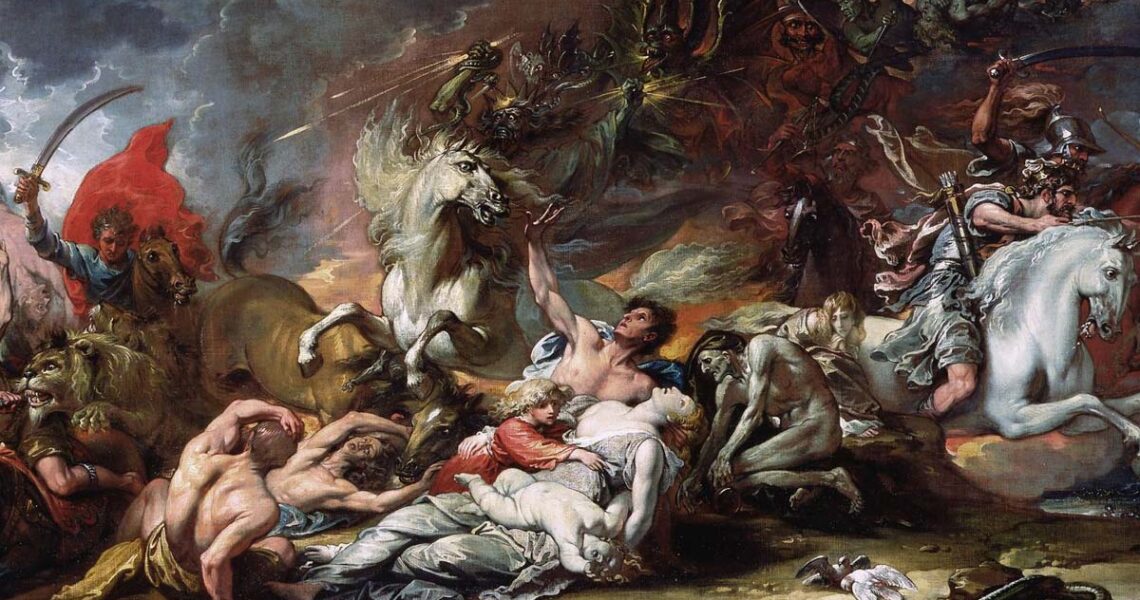Pralaya- the end of Days
The human race has always been fascinated by the idea of the Dooms Day or the destruction of the world. Several Hollywood movies like 2012 have kindled interest in the phenomenon even further, However, several man-made cataclysmic possibilities like nuclear war, natural catastrophes like flood, earthquake, cosmic disturbances like earth-asteroid collision, meteorite shower, etc. have fuelled the apprehensions even more.
However, mankind has always been threatened by the possibilities of total disaster of the Earth from the time immemorial and several religious scriptures, including the Hindu puranas have tended to analyse the phenomenon.
In Hindu mythology, Pralaya is a Sanskrit word which connotes destruction. However, Hindu mythology does not confirm to the idea of a single event of destruction of the world, or even a single event of creation for that matter. Time, according to the Hindu mythologies, is cyclical and never ending. This eternal cycle of Life and Death; Birth and Re-birth; Formation and Dissolution is called Kaal-Chakra or the Wheel of Time. At the end of a cycle of Four Yugas or Chatur Yugas, the Cyclical Destruction of the world known as Pralaya occurs. During this time the earth faces calactysmic events that has the power to obliterate all life from the face of the planet.
The Puranic description of Pralaya occurring at the end of Chatur Yuga has stiking similarities to what is referred as Great Deluge in Biblical and Quranic references. As per all these scriptures, the whole earth was flooded by water devouring all the living and non-living things on it. In all these traditions One Man was selected by the Almighty to continue the legacy of human race.
In Hindu mythology, this man is Vaivasvat Many and in Bible this man is called Noah.
But this belief is the Great Deluge is not only supported by all these religions alone. This phenomenon was supported by other ancient mythologies as well such as in Sumerian and Babylonian, Tibetan, Egyptian, Greek and Norse mythologies etc. There can be found hundreds more examples from around the world.
But the astonishing fact is that all these geographically remote civilisations believed in the same phenomenon of great deluge- But why?
The answer may be the Ice Age. Perhaps all these mythologies refer to the same phenomenon one which we scientifically know to have taken place- that of the Ice Age.
In the earth’s part, there have been at least five major Ice Ages. During all these, the world has seen cycles of glaciation during which ice sheets advanced and retreated on 40,000- and 100,000-year time scales called Glacial Periods. The glacial retreat is called Interglacial. Currently we are in an interglacial, and the last glacial period came to an end 10,000 years ago. As a consequence of melt down of ice, we see what is called Great Deluge in the mythologies. As we see, all through our history, the busiest cities have thrived either on the river banks or on the coastline. As the melted ice flooded the lands, peoples must have been displaced and must have been forced for mass exodus. The planetary landmass was drastically changed because of this natural cataclysm. So, the cyclical nature of the Ice Ages combined with their ability to cause global floods can lead us to establish the relationship between it and the Pralaya myths from the Hindu mythology. But we must remember that every granule of time conveys either Creation or Destruction. As the eminent Austrian Physicist, Fritjof Capra, in Tao of Physics, describe it as the Dance of Shiva. As each atom is created, another is destroyed and this goes on in a cyclical manner. Whatever we amass in this life will be snatched away by the invisible hands of time. In this way, Oppenheimer, father of the Atomic Bomb quoted Lord Krishna, from the Bhagvad Gita- Time, I am, the Destroyer of All.
As we begin to realize the transience of our existence and follow the path of Spirituality, we become able to face the ‘Final Moment’ in the end.
